Ichthyosaurs represent one of the most remarkable examples of convergent evolution in the fossil record. These magnificent marine reptiles, whose name means “fish lizards,” dominated Earth’s oceans for over 150 million years during the Mesozoic Era. Despite being air-breathing reptiles that evolved from terrestrial ancestors, ichthyosaurs developed adaptations so specialized for aquatic life that they came to closely resemble modern dolphins and tuna in appearance and function. Their journey from land-dwelling reptiles to perfectly streamlined ocean predators showcases the incredible plasticity of evolution. Through examining their fossil record, paleontologists have uncovered fascinating details about how these creatures conquered the ancient seas through a series of remarkable anatomical and physiological transformations.
The Evolutionary Origins of Ichthyosaurs

Ichthyosaurs first appeared in the fossil record during the Early Triassic period, approximately 250 million years ago, shortly after the devastating Permian-Triassic extinction event that wiped out nearly 96% of marine species. Though reptilian, their exact ancestral lineage remains somewhat mysterious, with most evidence suggesting they evolved from diapsid reptiles that returned to the sea. Unlike other marine reptiles like plesiosaurs and mosasaurs that maintained more lizard-like appearances, ichthyosaurs underwent radical anatomical restructuring. Early transitional fossils show species with elongated bodies and limbs that were beginning to transform into fins, indicating a gradual adaptation to aquatic environments. By the time they reached their evolutionary peak in the Jurassic period, ichthyosaurs had completely severed their anatomical ties to land, becoming fully committed to marine life in ways that few other reptilian groups achieved.
Hydrodynamic Body Shape: The Path to Efficiency

Perhaps the most striking adaptation of ichthyosaurs was their extraordinarily fish-like body profile, representing a perfect example of convergent evolution with modern fast-swimming marine vertebrates. Advanced ichthyosaurs developed a streamlined, spindle-shaped body that minimized water resistance and maximized swimming efficiency. This teardrop silhouette, nearly identical to that of modern tuna and dolphins, represents an optimal design for rapid movement through water. Fossil evidence reveals that their bodies tapered at both ends, with a stiffened vertebral column that supported powerful swimming muscles. The remarkable similarity between ichthyosaur body plans and those of modern dolphins is even more impressive considering they evolved these features independently, separated by over 150 million years. This hydrodynamic shape allowed ichthyosaurs to slice through water with minimal energy expenditure, a critical adaptation for predators that needed to chase swift prey across vast oceanic distances.
Fin Transformation: From Limbs to Flippers

The transformation of ichthyosaur limbs stands as one of the most dramatic examples of evolutionary modification in vertebrate history. Their terrestrial ancestors’ legs underwent complete restructuring to become highly specialized fins perfectly adapted for marine locomotion. Unlike the paddle-like flippers of sea turtles or the more limb-like appendages of plesiosaurs, advanced ichthyosaur fins evolved into stiff, hydrodynamic surfaces that primarily provided stability and maneuverability rather than propulsion. Remarkable fossil specimens show that their front flippers contained hundreds of tightly packed disc-shaped bones arranged in complex patterns, creating rigid but flexible control surfaces. Some species developed up to eight rows of these densely packed phalanges, far exceeding the typical five digits found in most vertebrates. This hyperphalangy, combined with the flattened, elongated shape of their limb bones, created highly efficient hydrofoils that allowed precise control during high-speed underwater pursuits.
Propulsion Systems: The Power of the Tail

Ichthyosaurs evolved one of the most efficient locomotion systems seen in marine reptiles through the development of a powerful semi-lunate (half-moon shaped) tail fin. Unlike mosasaurs and plesiosaurs that used undulating or paddling movements for propulsion, advanced ichthyosaurs developed a crescent-shaped vertical tail fin structurally similar to that of sharks and tuna fish. Remarkably well-preserved specimens with soft tissue impressions reveal that this tail fin was hypocercal, meaning the vertebral column bent downward into the lower lobe, providing exceptional thrust and control. This adaptation enabled a swimming style based on powerful lateral undulations of the tail rather than the whole body, creating a more efficient propulsion mechanism that likely allowed sustained high-speed swimming. Modern engineering principles confirm that this tail design represents one of the most energy-efficient means of aquatic propulsion, enabling ichthyosaurs to maintain higher average swimming speeds than many other marine reptiles while requiring less energy expenditure.
Sensory Adaptations: Eyes Built for Deep Hunting

Perhaps the most extraordinary sensory adaptation of ichthyosaurs was their enormous eyes, which rank among the largest of any vertebrate animal relative to body size. Some species, particularly those from the Jurassic period, possessed eyeballs measuring up to 26 centimeters (10 inches) in diameter, housed in reinforced sclerotic rings that protected against water pressure. These massive eyes contained specialized cells and structures that likely allowed ichthyosaurs to navigate and hunt effectively in low-light conditions, potentially even at significant depths where sunlight barely penetrates. Paleontologists have determined that their eyes contained higher concentrations of rod cells than cone cells, optimizing vision for dimly lit environments rather than color discrimination. Additionally, the neural pathways from their eyes to their brains appear well-developed in cranial endocasts, suggesting vision served as their primary hunting sense. These adaptations collectively indicate that many ichthyosaur species were specialized for hunting in deeper waters or during crepuscular periods, exploiting ecological niches unavailable to other marine predators with less advanced visual systems.
Respiratory Evolution: Breathing in an Aquatic World

As air-breathing reptiles that had committed fully to marine life, ichthyosaurs faced the fundamental challenge of oxygen acquisition while remaining submerged. Their respiratory systems underwent substantial modification from their terrestrial ancestors to maximize underwater endurance. Skeletal evidence suggests their rib cages became more rigid and barrel-shaped, creating a larger, less compressible thoracic cavity that could accommodate enhanced lung capacity. This adaptation would have enabled them to take deeper breaths before diving and hold larger oxygen reserves. Ichthyosaur fossils also show nasal openings (nares) that migrated from the tip of the snout to a position higher on the skull, eventually evolving into blowhole-like structures similar to those of modern cetaceans. This repositioning allowed them to breathe at the water’s surface with minimal body exposure, increasing their efficiency and safety while breathing. Some research also suggests that advanced ichthyosaurs may have developed specialized oxygen-storing proteins in their muscles, similar to modern diving mammals, further extending their underwater endurance.
Reproductive Adaptations: Live Birth in Ancient Seas

One of the most remarkable adaptations of ichthyosaurs was their evolution of viviparity, giving birth to live young rather than laying eggs. Spectacular fossil specimens discovered with embryos preserved inside their body cavities or caught in the process of giving birth provide irrefutable evidence of this reproductive strategy. This adaptation eliminated the need to return to land for reproduction, allowing ichthyosaurs to become fully pelagic and exploit open ocean habitats far from shorelines. The fossil record indicates that ichthyosaurs typically gave birth to single, well-developed offspring that were immediately capable of swimming and feeding themselves. Some specimens show embryos positioned head-first in the birth canal, suggesting they emerged tail-first to prevent drowning during the birthing process, the same adaptation seen in modern cetaceans. This reproductive strategy represents a profound evolutionary solution to the challenge of reptilian reproduction in an exclusively marine environment, demonstrating how completely ichthyosaurs had adapted to oceanic life.
Thermoregulatory Systems: Maintaining Body Heat
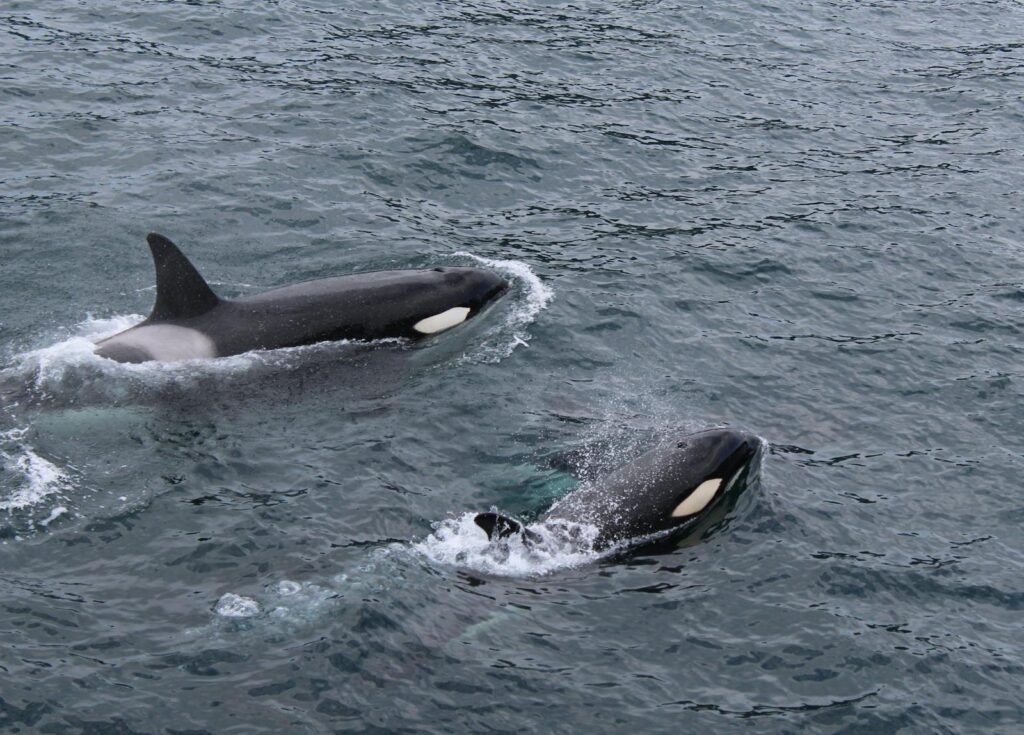
Living in the often-cold waters of Mesozoic oceans presented ichthyosaurs with significant thermoregulatory challenges that required specialized adaptations. Although traditionally considered ectothermic like other reptiles, mounting evidence suggests that advanced ichthyosaurs developed some degree of endothermy or regional heterothermy similar to modern tuna and lamnid sharks. Skeletal evidence indicates they possessed bodies with high surface-area-to-volume ratios that would typically lose heat rapidly in water, suggesting they must have had mechanisms to maintain elevated body temperatures. Analysis of ichthyosaur bone microstructure reveals dense vascularization and evidence of rapid, sustained growth patterns more consistent with endothermic animals than traditional ectotherms. Additionally, some species show evidence of countercurrent heat exchange systems in their fins and flukes, which would have helped retain core body heat. These adaptations would have provided significant advantages, allowing ichthyosaurs to maintain higher activity levels, swim in colder waters, and pursue prey more persistently than strictly cold-blooded marine predators.
Feeding Adaptations: Specialized Predatory Tools

Ichthyosaurs evolved a diverse array of feeding adaptations that allowed them to exploit multiple marine ecological niches over their long evolutionary history. Early species possessed relatively short snouts with robust conical teeth suitable for crushing hard-shelled prey like mollusks and crustaceans. As they diversified, many lineages developed elongated, dolphin-like snouts filled with numerous small, pointed teeth perfect for capturing slippery prey like fish and squid. Some specialized species, like Temnodontosaurus, evolved massive jaws with large, blade-like teeth capable of tackling larger prey, including other marine reptiles. Particularly specialized forms, such as Eurhinosaurus, developed bizarre asymmetrical jaws where the upper jaw extended far beyond the lower jaw, possibly used as a specialized tool for slashing through schools of fish. Stomach contents preserved in exceptional fossils reveal actual meals, confirming diets heavy in cephalopods, fish, and occasionally smaller marine reptiles. These diverse feeding adaptations allowed different ichthyosaur species to partition food resources, reducing competition and enabling multiple species to coexist in the same marine ecosystems.
Digestive and Metabolic Adaptations
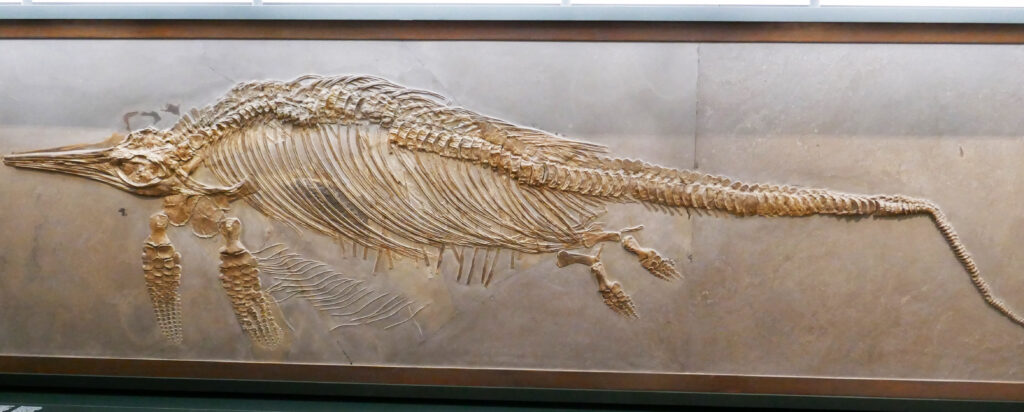
Ichthyosaurs developed specialized digestive and metabolic systems adapted to their predatory marine lifestyle and the unique challenges of oceanic environments. Fossil evidence indicates they possessed relatively short, simplified digestive tracts compared to their terrestrial ancestors, an adaptation seen in many highly active predators that consume protein-rich diets requiring less processing time. Their gastrointestinal systems likely featured enhanced hydrochloric acid production to rapidly break down fish bones, squid beaks, and other hard prey components. Coprolites (fossilized feces) from ichthyosaurs show relatively efficient digestion with few unprocessed remains. Examination of ichthyosaur livers, occasionally preserved as distinctive outlines in exceptional fossils, suggests they were proportionally larger than in most reptiles, potentially serving as buoyancy control organs similar to those in modern sharks. These metabolic adaptations collectively supported their active predatory lifestyle, enabling efficient energy extraction from prey and sustaining the high activity levels required for pursuit hunting in open ocean environments.
Diversity and Specialization Across Different Habitats
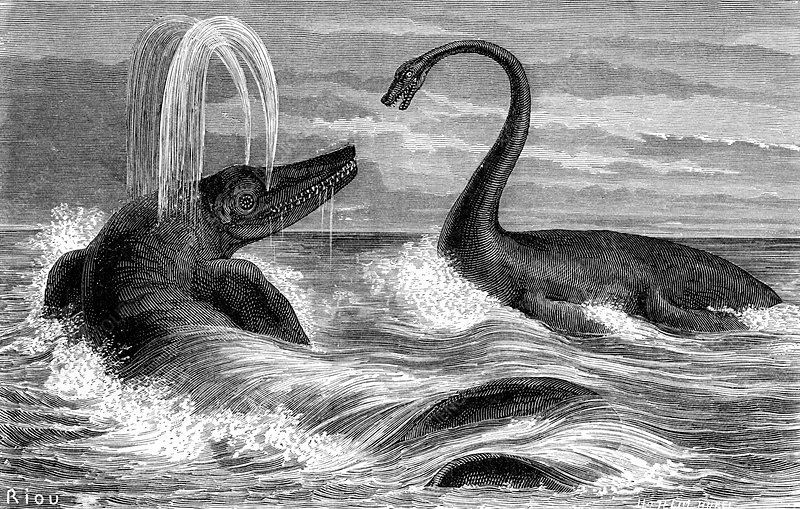
Throughout their 150-million-year reign, ichthyosaurs diversified into numerous specialized forms adapted to different marine habitats and ecological niches. Early Triassic species like Chaohusaurus showed transitional features and likely inhabited shallow coastal environments, while later forms became increasingly specialized for open ocean life. The Jurassic period witnessed peak ichthyosaur diversity, with species ranging from small, agile hunters like Stenopterygius that pursued fast-moving prey in mid-water habitats to massive predators like Temnodontosaurus that likely dominated as apex hunters. Some specialized forms, like Ophthalmosaurus, developed adaptations suggesting deep-diving capabilities, including reinforced eye structures resistant to pressure changes and potentially enhanced oxygen storage. By the Late Cretaceous, diversity had declined substantially, with the remaining species like Platypterygius showing adaptations for more generalist feeding strategies, potentially reflecting changing marine ecosystems. This impressive adaptive radiation allowed ichthyosaurs to exploit virtually every marine habitat, from shallow coastal lagoons to the bathypelagic zones of ancient oceans, demonstrating their remarkable evolutionary versatility.
Evolutionary Timeline and Adaptation Refinement
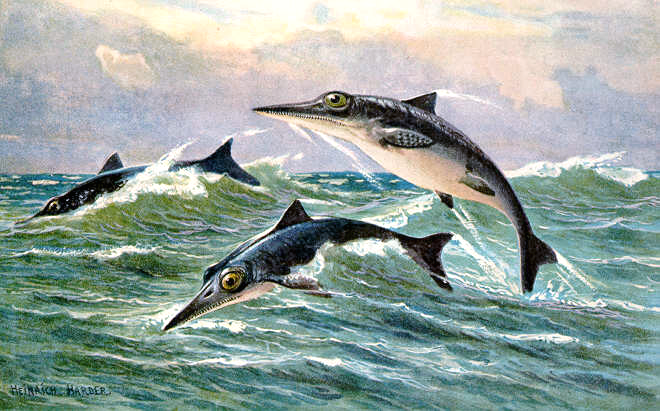
The evolutionary journey of ichthyosaurs represents one of the most dramatic transformations documented in the fossil record, with clear stages of adaptation refinement visible across geological time. Early Triassic forms like Utatsusaurus and Grippia still retained elongated bodies and relatively limb-like appendages, showing their recent terrestrial ancestry despite already being committed to aquatic life. By the Middle Triassic, species like Mixosaurus had developed more fish-shaped bodies and true fins, though still retaining some primitive features. The Early Jurassic marked the appearance of highly specialized forms like Stenopterygius and Ichthyosaurus, with fully streamlined bodies, vertical tail flukes, and refined sensory systems optimized for oceanic environments. Late Jurassic and Cretaceous species like Ophthalmosaurus and Platypterygius represented the pinnacle of ichthyosaurian adaptation, with hyper-specialized features for particular ecological niches. This progressive refinement of adaptations across millions of years reflects the continuous evolutionary pressure of marine environments, gradually sculpting these reptiles into creatures so specialized for ocean life that they convergently evolved features remarkably similar to modern dolphins and tuna.
The Legacy of Ichthyosaurian Adaptations
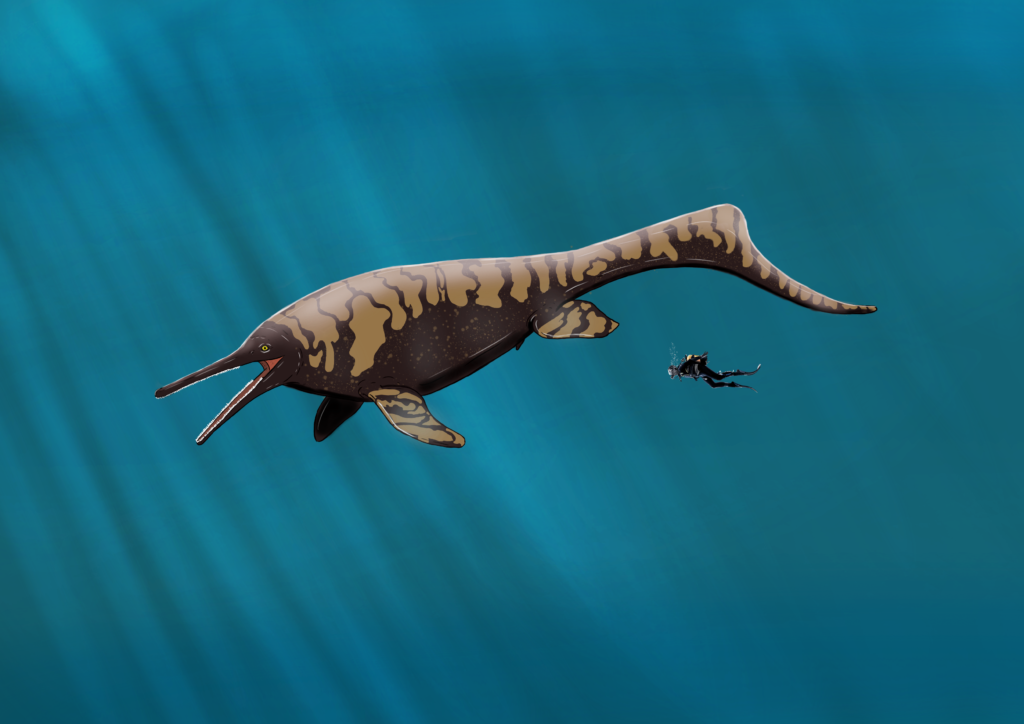
Though ichthyosaurs vanished from Earth’s oceans approximately 90 million years ago during the Late Cretaceous, their evolutionary legacy offers profound insights into adaptation, convergent evolution, and the requirements for successful marine life. Their body plan has been independently “discovered” by evolution multiple times—in modern dolphins, extinct thalattosuchian crocodiles, and to some degree in penguins and tuna—demonstrating that certain designs represent optimal solutions for rapid aquatic locomotion. The complete transition of ichthyosaurs from terrestrial reptiles to fully pelagic marine predators serves as a premier example of how dramatically species can transform when subjected to strong selective pressures over evolutionary time. Modern researchers studying biomechanics and fluid dynamics continue to draw inspiration from ichthyosaur anatomy when designing underwater vehicles and equipment. Perhaps most significantly, ichthyosaurs provide a compelling case study in evolutionary plasticity—how ancestors with limbs, lungs, and terrestrial sensory systems can, through accumulated adaptations over millions of years, transform into creatures perfectly suited for a completely different environment, leaving their terrestrial origins almost unrecognizable in their final form.
How Ichthyosaurs Became Masters of the Ancient Oceans

In conclusion, ichthyosaurs represent one of nature’s most complete evolutionary transformations—reptiles that returned to the sea and became so specialized for aquatic life that they converged remarkably with fish and marine mammals that would evolve millions of years later. Their journey from land to ocean required comprehensive adaptations affecting virtually every aspect of their anatomy and physiology: streamlined bodies for efficient swimming, fins transformed from limbs, powerful tail propulsion, enhanced vision, specialized breathing, live birth capabilities, modified thermoregulation, and specialized feeding mechanisms. These adaptations collectively allowed ichthyosaurs to thrive as dominant marine predators across multiple mass extinctions and changing ocean conditions. Although they ultimately disappeared millions of years before humans would discover their fossils, ichthyosaurs stand as a testament to the remarkable adaptability of life and the power of natural selection to shape organisms for their environments, no matter how dramatic the transition required.




